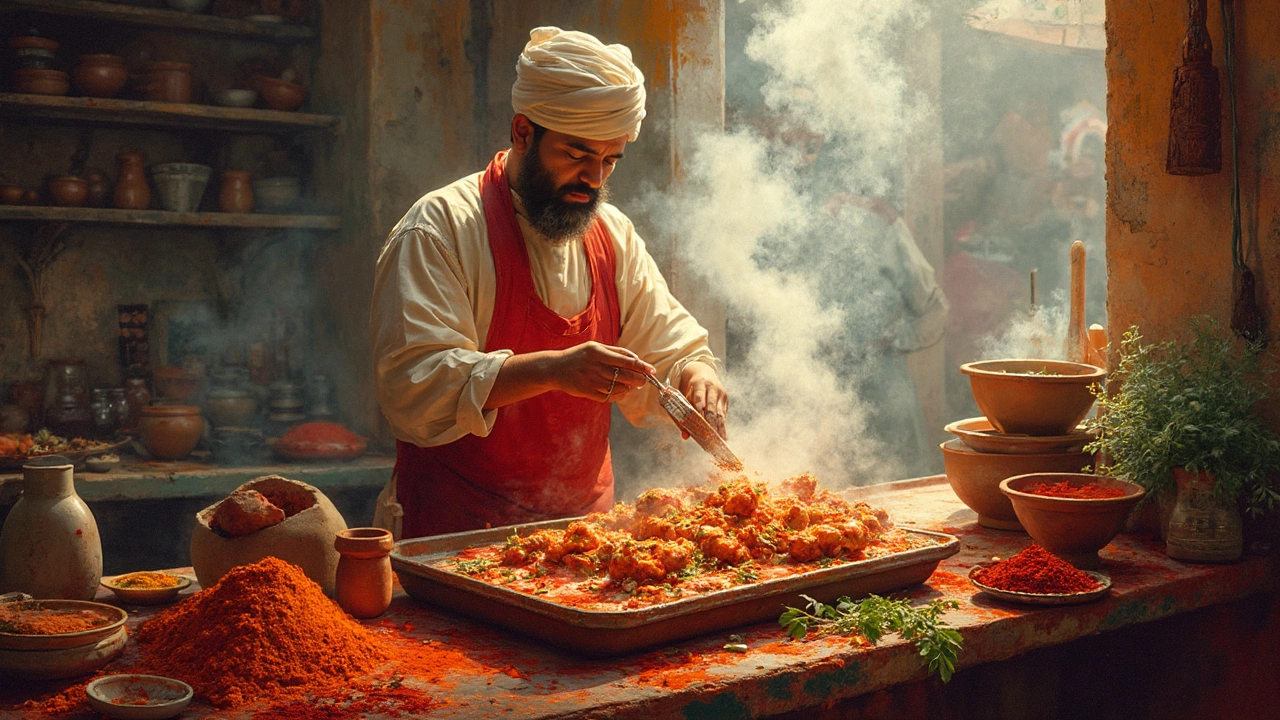Marinade Secrets: How Acid, Oil, and Spices Transform Indian Dishes
When working with Marinade, a blend of acid, oil, herbs and spices used to tenderize and flavor food before cooking. Also known as marinating mixture, it plays a crucial role in Indian kitchens, from street‑food snacks to festive feasts.
One of the most common acids is Lemon, the bright, citrusy fruit that adds pH‑balance and a fresh zing. It’s the secret behind fluffy biryani rice and that extra bite in many kebabs. When lemon juice meets oil and spices, the result is a balanced marinade that both softens proteins and locks in aroma.
Why Every Indian Dish Wants a Good Marinade
Take Biryani, a layered rice and meat dish known for its fragrant, moist character. The rice grains absorb a thin layer of seasoned liquid during the resting phase, which prevents them from becoming dry. The same principle works for paneer, chicken, or even vegetables – the more time the flavors have to penetrate, the richer the final bite.
Acidity isn’t the only player. Curd, a fermented dairy product that supplies mild tang and enzymes is another classic Indian base. It breaks down protein fibers, making the meat tender while adding a subtle sour note. Curd‑based marinades are especially popular in South Indian dosa batters and in the tenderizing step for kebabs.
Spice blends complete the picture. A typical Indian masala may include cumin, coriander, turmeric, and garam masala. These dry herbs supply depth, heat, and color. When combined with oil, they create a medium that carries flavor into every nook of the food, much like a carrier oil in a perfume.
Time is the hidden ingredient. A short 30‑minute soak can improve texture, but a longer 4‑6‑hour rest lets the acid fully act on proteins and the oil to coat each piece. That’s why many home cooks plan ahead – the science of marination rewards patience.
Understanding the roles of each component helps you troubleshoot common issues. If a meat stays tough, you might need more acid or a longer rest. If the flavor feels flat, increase the spice proportion or add a pinch of salt, which enhances aromatic perception.
Even vegetarian staples benefit. Marinating tofu or paneer with lemon, oil, and spices mimics the mouthfeel of meat, making plant‑based dishes more satisfying. The same technique can turn plain potatoes into a flavor‑packed side.When you add a dash of baking soda to a roti dough, you’re actually tweaking the pH, similar to how lemon affects a meat marinade. The alkaline environment makes gluten relax, resulting in a softer, puffier bread – another example of how acidity and alkalinity shape texture across Indian recipes.
Oil isn’t just a carrier; it also helps prevent moisture loss. A drizzle of mustard oil or ghee before cooking seals the surface, trapping juices inside. That’s why many biryani recipes call for layering fried onions soaked in oil over the rice – it adds both flavor and a protective barrier.
From a culinary science perspective, a marinade involves three main actions: denaturation (acid or enzymes breaking protein bonds), flavor infusion (spices and herbs diffusing into the food), and surface coating (oil encapsulating the pieces). Each action influences texture, taste, and aroma.
Putting it all together, you’ll find that the tag collection below explores these ideas from every angle – why lemon brightens biryani, how curd works in dosa batter, the role of baking soda in roti, and more. Dive in to see practical tips, myth‑busting facts, and step‑by‑step guides that let you master marinades in any Indian kitchen.

Tandoori Chicken: Why Is It So Tasty?
Tandoori chicken isn't just popular—it's an explosion of flavors thanks to how it's marinated, cooked, and seasoned. This article looks at what makes tandoori chicken so tasty, diving into the unique marinade and the cooking technique that brings smoky depth to every bite. You'll get handy tips for nailing the recipe at home, including how to get those signature grill marks without a tandoor oven. Loved in Indian restaurants everywhere, this dish's secret is a real mix of tradition, science, and a big punch of spice.